"On a Columnar Self—"
To my eye, the two women featured just below--the vibrant young mother I photographed in Burkina Faso and the powerhouse poet Emily Dickinson in Amherst, Massachusetts--have qualities in common. Do you see what I see?
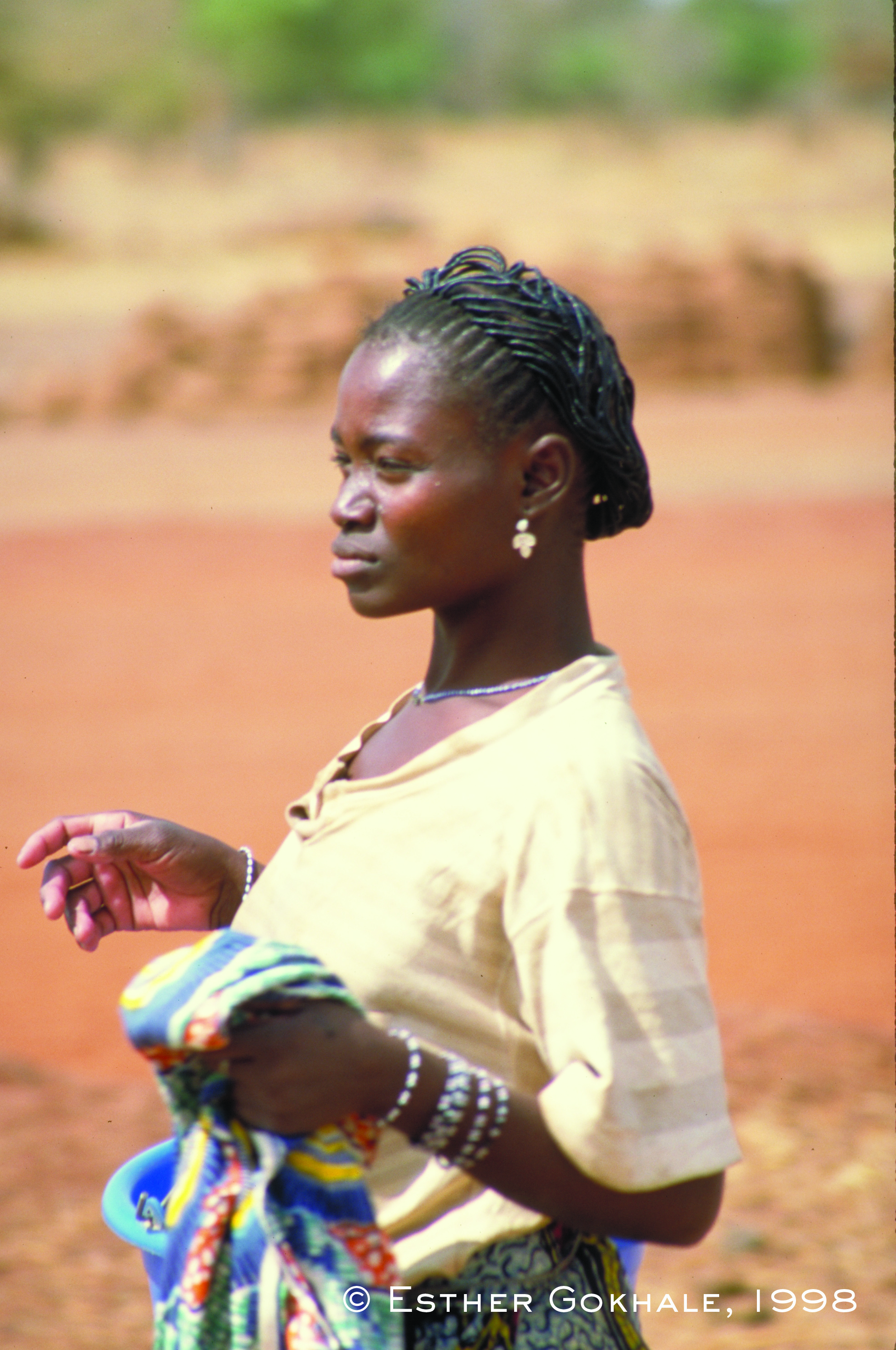
Burkina Faso woman hangs clothes out to dry at a communal well
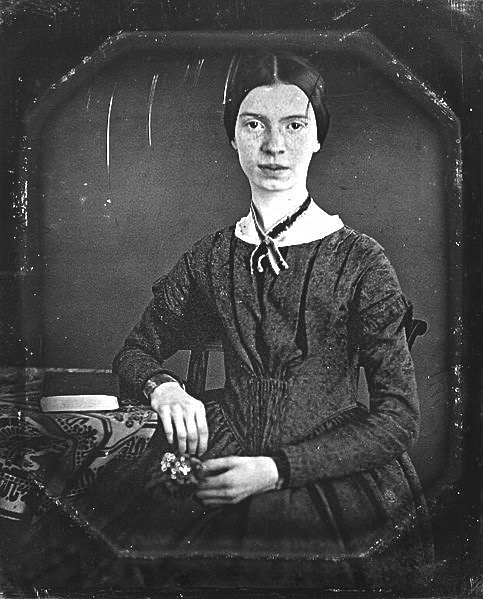
American poet Emily Dickinson sits with posies in a parlor
Posture, poetry, and power
Because I see poetry in healthy posture and find inspiration in the powerful poems of Emily Dickinson, I will connect some disparate dots and weigh in on the fundamental strengths of the poet's posture, as captured in the 1847 daguerreotype of her at about age 16, just above. Also, because some believe the woman in the patterned dress, below left, to be the poet (see interesting article here) at age 28 or 29, I will comment on her very similar posture, as well.
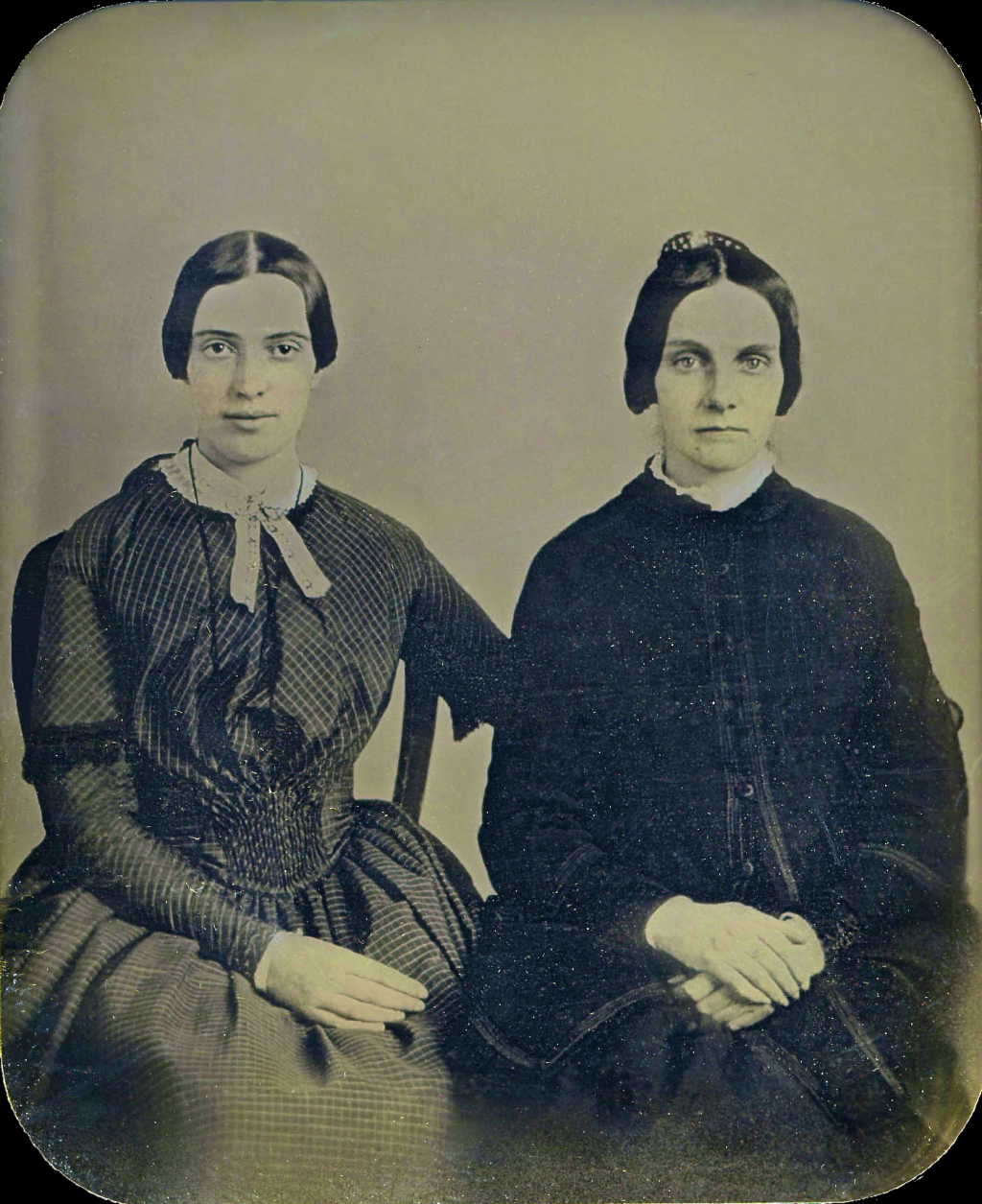
If the woman on the left is in fact Emily Dickinson, then this daguerreotype captures her at the height of her powers
Healthy posture, a 19th-century norm
Let's consider postural elements captured in both portraits.
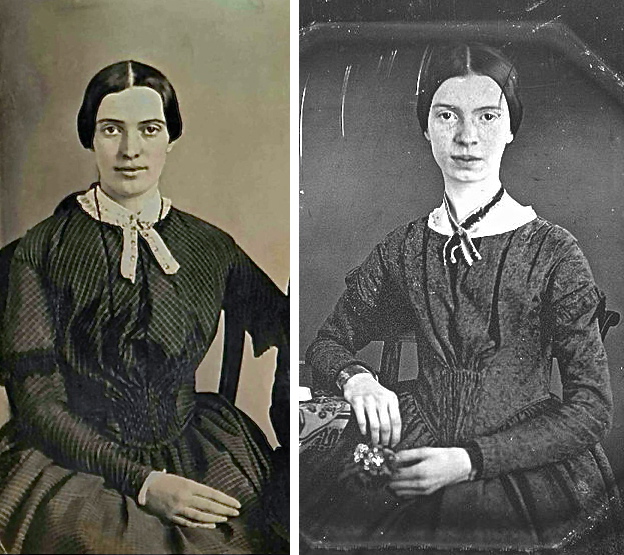
Expansive, powerful posture is characteristic of both portraits
From head to wrist, here's what particularly strikes me:
- Emily's chin angles down naturally and her neck is elongated. One indicator of this is that the tragus, the little bump in the middle of the external ear, is positioned above the tip of her nose. This has nothing to do with the length of Emily's nose, it’s all about the angle of her head influencing the architecture of her neck.
- Neck lengthening is beneficial because it decompresses spinal disks and nerves and resets the baseline length of long back muscles, which reduces muscle pain.

Healthy orientation of the head and an elongated
neck characterize the posture of all of the women, above
- Seated with siblings, below left, Emily at age 8 or 9 models the same healthy posture as shown in the daguerreotype(s).
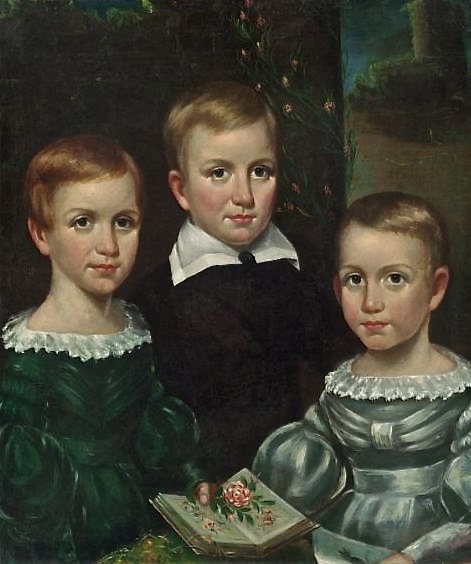
The Dickinson children painted by O. A. Bullard circa 1840;
- In the daguerreotype(s) and the oil portrait, there’s a lot of separation between Emily's shoulders and her ears. Her shoulders are relaxed and downward-sloping.
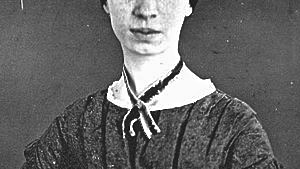
The distance between Emily's ears and shoulders is great;
- Emily's arms hang wide, as indicated by the significant gap between her body and her arms. This indicates that her rotator cuff muscles are not clenched and pulling her shoulders close into her body. Though she holds flowers in front of her, there isn’t unnecessary strain anywhere in her body.
- Emily's spine is wonderfully elongated, especially in the 1847 daguerreotype, and her body is both upright and relaxed. Because her shoulders remain back, her chest is open and available for optimal breathing.
- I can’t see Emily's "behind," but the physics of such "adequate, erect -" posture dictate what I call "the building-block stack," and I have to deduce that her behind is in fact behind her and her pelvis well-settled.
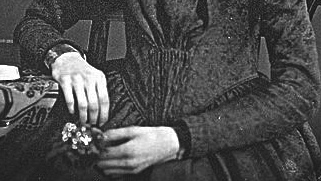 Tai-Chi-fashion, Emily maintains her wrists intact
Tai-Chi-fashion, Emily maintains her wrists intact- Finally, in both daguerreotypes, the line of the wrist is not broken and the hands are relaxed.
On a Columnar Self-- and I Choose, just a Crown 19th--
Because no post featuring Emily Dickinson would be complete without including some of her poetry, I'll share two favorites. "On a Columnar Self-" particularly resonates, because I recognize and identify with the subject. The poem reminds me of the time I first sat comfortably. The feeling was very much as if a window had just been opened. I also had the strong awareness that everything I needed was right there, and everything else life brought would be a bonus. I had no further needs because I felt so much delight and self-sufficiency. And that's some of what Emily describes so compellingly in this poem:
On a Columnar Self—
How ample to rely In Tumult—
or Extremity—
How good the Certainty That Lever cannot pry—
And Wedge cannot divide Conviction—
That Granitic Base—
Though none be on our side—
Suffice Us—
for a Crowd—
Ourself—
and Rectitude—
And that Assembly—
not far off
From furthest Spirit—God—
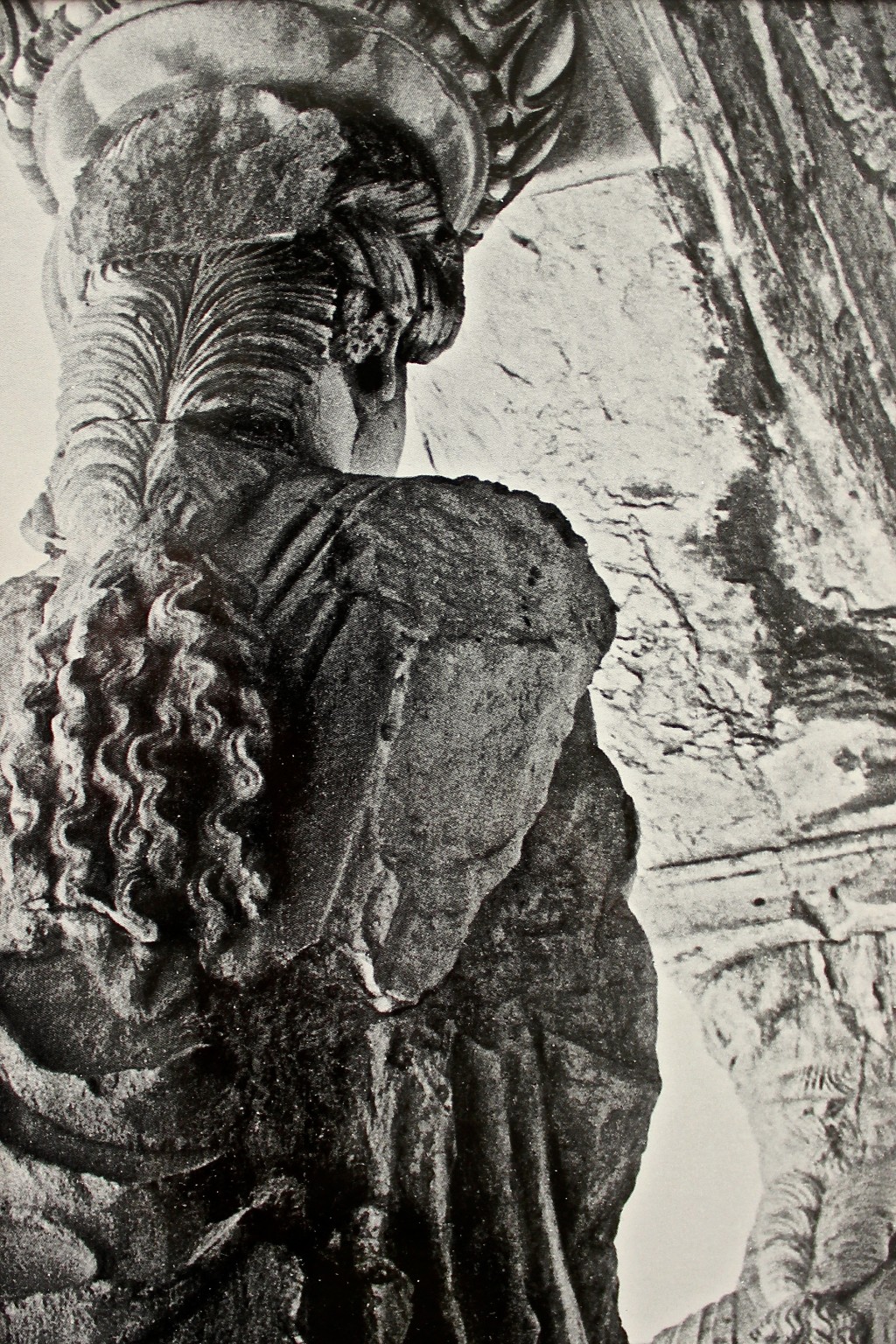 Caryatid of Erechtheion, a literal example of "a Columnar Self"
Caryatid of Erechtheion, a literal example of "a Columnar Self"
All the women shown above are regal and self-possessed. They set the bar for us to rise up to our best selves, and, in so doing, call up this second favorite Dickinson poem:
I’m ceded—I’ve stopped being Theirs—
The name They dropped upon my face
With water, in the country church
Is finished using, now,
And They can put it with my Dolls,
My childhood, and the string of spools,
I’ve finished threading—too—
Baptized, before, without the choice,
But this time, consciously, of Grace—
Unto supremest name—
Called to my Full—
The Crescent dropped—
Existence’s whole Arc, filled up,
With one small Diadem.
My second Rank—too small the first—
Crowned—Crowing—on my Father’s breast—
A half unconscious Queen—
But this time—Adequate—Erect,
With Will to choose, or to reject,
And I choose, just a Crown—
Image Credits: Burkina Faso woman at communal well, Esther Gokhale; 1847 daguerreotype of Emily Dickinson created by William C. North, original held at Amherst College, uploaded via Wikimedia Commons; Unverified daguerreotype ca 1859 that might show Emily Dickinson with Kate Scott Turner, Amherst College Archives and Special Collections, uploaded via Wikimedia Commons; Head orientation and elongated neck illustration, Gokhale Method; A New Emily Dickinson Emerges video by North 100, uploaded from YouTube; The Dickinson Chidlren ca. 1840, O. A. Bullard, From the Dickinson Room at Houghton Library, Harvard, uploaded via Wikimedia Commons; photo of postcard of Caryatid of the Erechtheion, Athens, Benaki Museum Photographic Archives, 1932-1939.

Comments
Beautiful, thank you. I'm
Beautiful, thank you. I'm still waiting to feel really relaxed in a good posture. Every once in awhile I catch myself doing it naturally, so it's very inspiring to read all of your posts.
Yes, yes, keep journeying on.
Yes, yes, keep journeying on. It's worthwhile, and there are treasures along the way.
Thank you for connecting the
So interesting. Technically,
So interesting. Technically, this walk is very distant from glidewalking. He settles into his forward hip, his arms swing vigorously though his pace is not fast, he lands on a straight knee, and so on - and yet, there's art in this piece, and that we have in common - thank you!
Add New Comment
Login to add commment
Login